eBook 3: Chapter 1
Starting Your BCM Implementation for Pavilion Kuala Lumpur
Introduction
Business continuity management (BCM) is no longer just a compliance requirement; it has become a critical enabler for organisational resilience.
For an iconic retail destination like Pavilion Kuala Lumpur, ensuring the continuity of its operations, services, and customer experience is paramount.
This eBook 3, “Starting Your BCM Implementation”, is designed to guide organisations through the practical steps of initiating or updating a business continuity management project, building on the foundation established in the previous two eBooks of this series:
- eBook 1: Understanding Your Organisation – which provides insights into organisational structures, operations, and core business services.
- eBook 2: Implementing BCM Planning Methodology – which introduces the BCM methodology framework and step-by-step planning approach.
This third eBook drills down into the detailed execution of the BCM planning methodology, focusing on practical templates and exercises that organisations can use to capture critical information, assess risks, and develop continuity strategies.
The BCM Planning Methodology
The BCM planning methodology is structured into four key phases, each supported by specific templates and exercises.
These phases ensure a systematic and repeatable approach to business continuity management:
1. Risk Analysis and Review (RAR)
- Identification of potential threats and hazards that could impact the organisation.
- Completion of the following templates:
- [RAR T1] List of Threats – catalogues the risks to business operations.
- [RAR T2] Treatment and Control – documents measures to mitigate risks.
- [RAR T3] Risk Impact and Likelihood Assessment – evaluates the likelihood and potential impact of identified risks.
2. Business Impact Analysis (BIA)
- Focuses on identifying and assessing critical business functions, their dependencies, and the consequences of disruption.
- Templates to be completed for each critical business function include:
- Part 0: Corporate MBCO & Product and Services [MBCO] [P&S]
- Part 1: Identification of Business Functions [BIAQ T1]
- Part 2: Impact Areas of Business Functions [BIAQ T1]
- Part 3: Impact Over Time of Business Functions [BIAQ T2]
- Part 4: Supporting IT Systems and Applications [BIAQ T2]
- Part 5: Inter-dependencies [BIAQ T3]
- Part 6: Vital Records [BIAQ T3]
3. Business Continuity Strategy (BCS)
- Establishes strategies to maintain or restore operations following a disruption.
- Each critical business unit completes the following:
- [BCS T1] Mitigation Strategies – actions to reduce risk exposure.
- [BCS T2] Recovery Strategies and Justifications – methods to restore business functions and rationale for chosen strategies.
- [BCS T3] Minimum Resources Required during a Disaster – essential personnel, equipment, and facilities needed to continue operations.
4. Plan Development (PD)
- Focuses on creating detailed BC procedures [PD] for each critical business function to ensure operational readiness and resilience.
Critical Business Functions (CBF) of Pavilion Kuala Lumpur
To facilitate the BIA and subsequent BCM phases, Pavilion Kuala Lumpur’s operations are grouped into ten Critical Business Functions (CBFs):
|
CBF Code |
Critical Business Function |
|
CBF-1 |
Mall Operations Management |
|
CBF-2 |
Tenant and Leasing Management |
|
CBF-3 |
Security and Emergency Response |
|
CBF-4 |
Building Facilities and Technical Services |
|
CBF-5 |
Information Technology and Digital Services |
|
CBF-6 |
Customer Experience and Concierge Services |
|
CBF-7 |
Crisis Communication and Media Relations |
|
CBF-8 |
Finance and Revenue Collection |
|
CBF-9 |
Health, Safety, and Environmental Management |
|
CBF-10 |
Retail Marketing and Events Management |
This list marks the starting point for the Business Impact Analysis phase and will guide organisations in identifying priorities, dependencies, and potential risks across Pavilion Kuala Lumpur’s operations.
Purpose of this eBook
This eBook serves as a practical companion for organisations intending to:
- Initiate a new BCM project from scratch.
- Update or enhance an existing BCM program.
- Apply the BCM Institute’s training-led methodology, ensuring alignment with internationally recognised BCM standards.
By following the templates, exercises, and structured guidance provided in this eBook, organisations can systematically capture, assess, and plan for business continuity.
The ultimate goal is to build a resilient, responsive, and prepared organisation capable of navigating disruptions with minimal operational impact.
In the following chapters, we will explore each BCM planning phase in detail, with step-by-step instructions, completed templates, and practical examples specific to Pavilion Kuala Lumpur.
This hands-on approach ensures the BCM program is not just theoretical but also actionable and implementable.
Implementing BCM: Pavilion Kuala Lumpur — A Case in Retail Resilience |
||||||
| eBook 3: Starting Your BCM Implementation |
||||||
| MBCO | P&S | RAR T1 | RAR T2 | RAR T3 | BCS T1 | CBF |
More Information About Business Continuity Management Courses
To learn more about the course and schedule, click the buttons below for the BCM-300 Business Continuity Management Implementer [BCM-3] and the BCM-5000 Business Continuity Management Expert Implementer [BCM-5].




![[BCM] [GEN] [E3] [C1] Starting Your BCM Implementation Banner](https://blog.bcm-institute.org/hs-fs/hubfs/BCM%20E3%20Blog%20Long%20Banner/%5BBCM%5D%20%5BGEN%5D%20%5BE3%5D%20%5BC1%5D%20Starting%20Your%20BCM%20Implementation%20Banner.png?width=1920&height=250&name=%5BBCM%5D%20%5BGEN%5D%20%5BE3%5D%20%5BC1%5D%20Starting%20Your%20BCM%20Implementation%20Banner.png)


![Register [BL-B-3]*](https://no-cache.hubspot.com/cta/default/3893111/ac6cf073-4cdd-4541-91ed-889f731d5076.png)



![FAQ [BL-B-3]](https://no-cache.hubspot.com/cta/default/3893111/b3824ba1-7aa1-4eb6-bef8-94f57121c5ae.png)
![Email to Sales Team [BCM Institute]](https://no-cache.hubspot.com/cta/default/3893111/3c53daeb-2836-4843-b0e0-645baee2ab9e.png)





